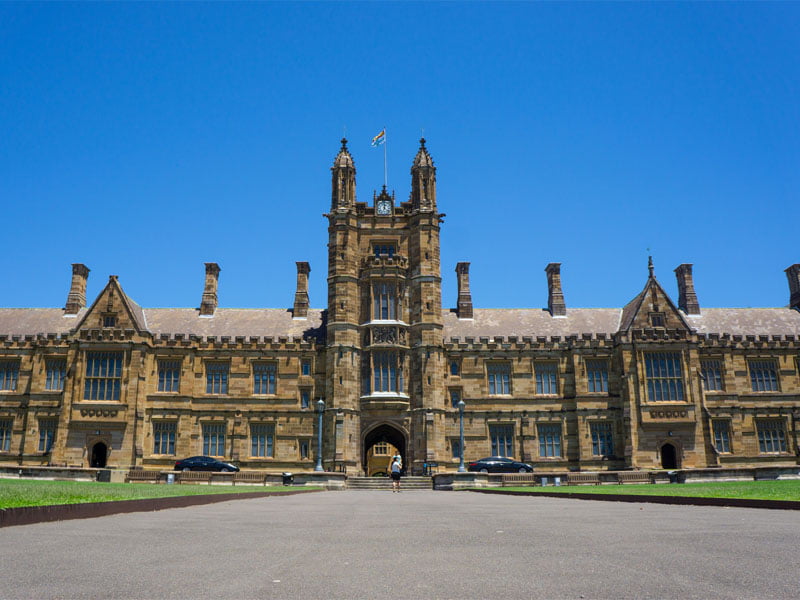The $2 billion the federal government will inject to align university research commercialisation with its hand-picked manufacturing priorities will be stretched across the next 11 years.
A day after unveiling a $2 billion Research Commercialisation Action Plan, the government has released the overarching strategy on which the plan is based.
The strategy has been in development for more than a year, and has been steered by a taskforce featuring representatives from Siemens, BHP and Macquarie Group.
The action plan aims to “shift the dial” on commercialisation in Australia, aligning it with the government’s six manufacturing priority areas and paving the way for a “strategic, targeted shift in focus, activity and attitude”.
“This is a game changer for commercialisation and innovation in Australia,” acting Education Minister Stuart Robert said.
“This action plan provides an overarching strategy for research commercialisation to create the next generation of great Australian products and companies. It is supported by our captains of industry and research, backed by $2.2 billion in new investment.”

The significant reforms within the action plan have already been announced by the Coalition in recent months, but it does reveal that the $2.2 billion in funding will be provided over more than a decade, and that the government plans to make the standardised university IP agreements mandatory.
The action plan says that the money committed to university research commercialisation will be spread out across more than 10 years, putting that commitment at about $145 million per year.
The government has been criticised for cutting significant funding for research and universities, including slashing $1.47 billion from the Australian Research Council over the past nine years.
The Coalition provided $5.8 million in the 2020 budget for a scoping study on commercialisation, with an expert panel established in November 2020. The action plan is the final result of this process, providing a “comprehensive set of reforms to boost commercialisation” and collaboration between universities and the private sector.
Siemens Australia chief executive Jeff Connolly chaired the expert committee, and said significant reforms are needed to improve Australia’s commercialisation woes.
“It was very quickly apparent that a single program was not the solution to this issue and that a more strategic and systemic approach was required. The result is the broad-ranging reforms outlined in this action plan,” Mr Connolly said.
“This action plan commits the Australian government to shifting the dial to place more emphasis on the translation and commercialisation of research.”
These reforms will focus on four areas: putting national priorities at the centre of government-funded research, investing in two schemes to ramp up activity, reforming existing university funding and building a “bedrock” of key people across the sector.
Major reforms in most of these areas have already been announced, including the $1.6 billion Australia’s Economic Accelerator, a PhDs program, the Trailblazers scheme and standardised IP agreements for universities.
The overarching strategy from the action plan is to link university research and commercialisation with the federal government’s six chosen areas of focus for its manufacturing policies: resources tech and critical minerals processing, food and beverage, medical products, recycling and clean energy, defence and space.
This will be done through prioritising these sectors for the new accelerator program, and reforming existing university research funding to prioritise these sectors.
“Focusing research efforts in priority areas presents an opportunity to drive focus and collaboration in areas of activity critical to economic growth and sovereign capability,” the report said.
“Linking commercialization reforms to priority areas is important, as it will focus effort and ensure a connection between the supply of quality research and the demand from business for ideas and products to commercialise.”
The success of this alignment will be reviewed by the government every five years, with an annual report published as well.
The Australian government will invest $11.8 billion in R&D in 2021-22, with $3.7 billion of this funding going towards the higher education sector. But Australia’s commercial outcomes do not match its research performance, and there is a misalignment between industry and university research, the plan says.
“To support long-running economic growth as Australia recovers from COVID-19, Australia’s outstanding research outputs need to be better translated and commercialised so that Australian innovations can be utilised to create new jobs, companies and wealth,” the action plan reads.
“Current efforts to pursue the commercial application of that research and to ensure that Australian businesses and industry are at the forefront of emerging technologies are not sufficient.
“There are significant gains to be made for Australia from a strategic, targeted shift in focus, activity and attitude.”
The action plan also includes reforms to the Australian Research Council and the strengthening of the national interest test used to assess research grants.
Earlier this week Prime Minister Scott Morrison announced a $2 billion package to support the commercialisation of university research. The majority of this money will be going towards Australia’s Economic Accelerator, a three-stage program for turning research into viable businesses. As part of this, CSIRO’s Main Sequence Ventures will be receiving a $150 million top up.
The action plan includes some new details on this program, including that its $1.6 billion in funding will be spread out across the next decade.
The accelerator will be governed by an expert commercialisation board with eight members, supported by expert priority managers representing each of the priority sectors. This board will be appointed by mid-2022.
The legislation to facilitate the launch of the program is expected to be passed in the first half of this year.
A program to facilitate 1800 new PhDs and 800 industry fellows over the next decade was also recently announced by the government.
Late last year the $242.7 million Trailblazers program was unveiled, with four universities to receive up to $50 million to establish industry-targeted, commercialisation research hubs. Eight universities have since been shortlisted for this funding.
Do you know more? Contact James Riley via Email.

